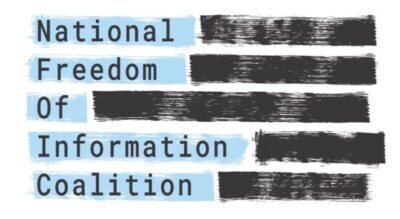From Appealing Brief: Only days before the end of the 2013 legislative session last June, someone (apparently a Fox News reporter) started a false rumor that documentary filmmaker Michael Moore was going to make a Freedom of Information Act (“FOIA”) request for graphic crime scene photographs of the Sandy Hook massacre and then splash those photographs all over the Internet or movie screens. Michael Moore never made any such request and he never had any intention of making such a request. Nevertheless, the Fox News rumor triggered a misguided frenzy in the legislature to amend the FOIA to prevent the disclosure of crime scene photographs of any homicide victims. It also led to the creation of the Task Force on Victim Privacy and the Public’s Right to Know, which is charged with examining the balance between victims’ rights and the FOIA and making recommendations to the legislature regarding further amending the FOIA in the interest of victim privacy. The Task Force is currently in the process of holding public hearings on the issue.
Having followed these developments closely (I am the President of the Connecticut Foundation for Open Government), I am convinced that the General Assembly created the Task Force to seek a solution to a non-existent problem. Moreover, the creation of the Task Force has, ironically, caused the Sandy Hook families to suffer the very pain they sought to avoid by the disclosure of photographs. It has distracted them from the process of healing and forced them instead to endure more public hearings and discuss the horrific events of December 14, 2012.
Why do I describe the Task Force as seeking a solution to a non-existent problem? Because although graphic crime scene photographs of victims, including homicide victims, have long been subject to disclosure under the FOIA, I can’t find a single instance in our state of such a photograph being disclosed to the public pursuant to an FOIA request and then being published in a newspaper or on the Internet.
Consider the following: Before Sandy Hook, there was the July 23, 2007 murder of three members of the Petit family in Cheshire, CT. The Petit home was set afire and Dr. Petit’s wife and two daughters were murdered in the home. Dr. Petit was very seriously injured, but managed to escape. The police took many photographs of the crime scene, including photographs of the victims. All of those photographs were public records and thus subject to disclosure under the FOIA upon request. Do a Google search and you will find some crime scene photographs from the Cheshire murder scene on the Internet. But you will not find any pictures of the homicide victims. Furthermore, the pictures on the Internet are ones that were introduced in evidence at the trials of Steven Hayes and Joshua Komisarjevsky. The appearance of those pictures on the Internet has nothing to do with the FOIA and everything to do with the fact that the public has a First Amendment right of access to court proceedings and documents, including trial exhibits. If you don’t want trial exhibits to appear in newspapers or on the Internet, the “problem” is not the FOIA; it is the First Amendment.
Visit Appealing Brief for more.
Daniel Klau is the president of the Connecticut Foundation for Open Government. The Connecticut Foundation for Open Government is a member of NFOIC. –eds
======
